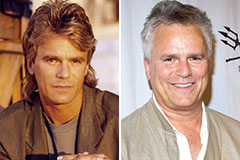Regarding the annals of professional wrestling background, few championship belts stimulate the exact same feeling of stature, magnificence, and legendary status as the WWF Winged Eagle Championship Title Belt. Presented throughout a critical age for the Globe Fumbling Federation (WWF), this certain design not just represented the pinnacle of wrestling achievement yet also became completely related to several of the most significant names and most remarkable minutes in the sport's history. The WWF Winged Eagle Belt transcended its function as a mere reward; it ended up being a symbol of quality, a concrete depiction of a champion's hard work, commitment, and utmost accomplishment within the made even circle. Its aesthetic appeal, coupled with the famous numbers who proudly used it around their midsections, strengthened its location as one of the most cherished and immediately recognizable championship layouts in the whole industry.
The late 1980s marked a period of explosive growth and mainstream appeal for the WWF, mostly fueled by the charm of Hulk Hogan and the blossoming "Rock 'n' Wrestling" era. As the company's visibility and fanbase increased, there was a demand for a championship belt that not just looked respected however likewise aesthetically personified this new era of larger-than-life individualities and fascinating stories. The existing WWF Championship belt, while famous in its very own right, was ready for an update that would resonate with the advancing visual of the promotion.
The WWF Winged Eagle Belt made its launching in early 1988. While the exact date of its introduction is commonly discussed amongst battling historians, it is widely accepted that Hunk Hogan was the very first to wear this brand-new style after keeping his WWF Championship. The belt was a significant departure from its predecessor, boasting a extra elaborate and aesthetically striking look. The focal point of the layout was a large, intricately thorough gold plate including a marvelous eagle with its wings totally outstretched, gripping a banner that happily showed the WWF logo. This main image emanated power, flexibility, and dominance, flawlessly lining up with the larger-than-life personas that dominated the WWF landscape at the time.
Flanking the central eagle were smaller, elaborate side plates. These side plates were not originally customizable with the champion's name, a feature that would end up being much more common in later championship styles. Instead, they usually featured world layouts or more decorations that contributed to the overall regal appearance of the belt. The natural leather band of the WWF Winged Eagle Belt was generally black, supplying a raw contrast to the gleaming gold of the plates and additional highlighting their detailed describing.
The visual effect of the WWF Winged Eagle Belt was undeniable. Its dimension and fancy layout made it quickly well-known and a coveted prize for any type of wrestler desiring reach the top of the WWF. It looked like a champion, carrying an air of relevance and representing that its owner was absolutely the very best worldwide. This visual allure played a critical duty in elevating the standing of the WWF Championship and making it a symbol that fans could conveniently relate to and desire see their preferred wrestlers hold.
Past its visual allure, the WWF Winged Eagle Belt came to be identified with an period of fabulous champions and extraordinary storylines. Complying with Hunk Hogan's initial regime with the title, a who's that of battling symbols happily brought this variation of the championship. "Macho Man" Randy Savage, with his flamboyant style and intense in-ring identity, added one more layer of prestige to the WWF Winged Eagle Belt during his remarkable powers. The Ultimate Warrior, with his impressive energy and enthusiastic connection with the audience, also held the title, additional cementing its importance throughout the elevation of his appeal.
The very early to mid-1990s saw the WWF Winged Eagle Belt stay the ultimate prize, used by technical fumbling masters like Bret " Hit Man" Hart, whose powers were characterized by intense in-ring competitors and a solid link with the dedicated WWF fanbase. Shawn Michaels, "The Broken heart Child," likewise held the title during this duration, showcasing his incredible athleticism and charisma while lugging the famous belt. Each of these champions brought their special design and character to the leading edge, further improving the heritage and status associated with the WWF Winged Eagle Belt.
Even as the WWF transitioned into the edgier and more rebellious "Attitude Era" in the late 1990s, the WWF Winged Eagle Belt remained the top prize. " Rock Cold" Steve Austin, the anti-establishment icon who specified the age, famously wwf winged eagle belt held this version of the championship prior to it was eventually replaced with the "Big Eagle" design in late 1998. Austin's fiery mindset and defiant personality, integrated with the graph of the WWF Winged Eagle Belt, developed a effective picture that resonated deeply with the altering tastes of the wrestling audience. He was the last permanent WWF Champion to use this design, noting completion of an age for this certain iteration of the title.
The legacy of the WWF Winged Eagle Belt prolongs far beyond the wrestlers who held it. It stands for a golden era for the WWF, a period of considerable growth and cultural impact. The belt itself has come to be a treasured artefact for battling fans, usually showing up in historic retrospectives, docudramas, and product. Its legendary design continues to evoke nostalgia and affection among those that witnessed the era it specified.
Finally, the WWF Winged Eagle Fumbling Championship Title Belt holds a unique location in the hearts of wrestling fans worldwide. Its impressive style, including the powerful winged eagle, flawlessly caught the spirit of a transformative era for the WWF. Extra importantly, it was the sign of achievement for a generation of fabulous wrestlers who captivated audiences and left an indelible mark on the market. The WWF Winged Eagle Belt is greater than just a championship; it is a timeless icon, representing the pinnacle of success and a cherished item of specialist fumbling history. Its photo continues to be instantly recognizable and remains to be celebrated as one of the greatest champion designs of perpetuity.
 Angus T. Jones Then & Now!
Angus T. Jones Then & Now! Anthony Michael Hall Then & Now!
Anthony Michael Hall Then & Now! Tahj Mowry Then & Now!
Tahj Mowry Then & Now! Dawn Wells Then & Now!
Dawn Wells Then & Now! Richard Dean Anderson Then & Now!
Richard Dean Anderson Then & Now!